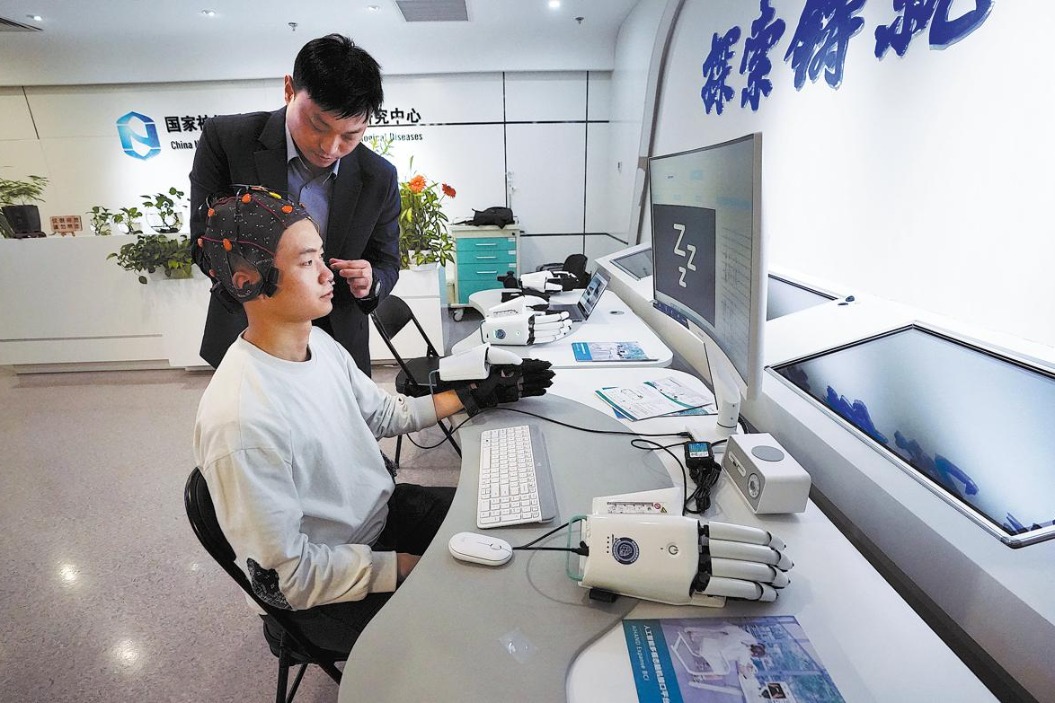Mental strains push services to limit in US
By MAY ZHOU in Houston | China Daily | Updated: 2022-01-18 09:50
The emails and phone calls that New Jersey therapist Jonathan Caspi receives are often from families on the brink of collapse from the hardships as a result of the COVID-19 pandemic.
The only thing Caspi can do at this point is politely decline to take them on. His practice has been at capacity for months.
"I used to refer them to other therapists, but they're all full, too," he told the North Jersey news site.
Such a scenario is playing out across the United States as the pandemic is dragging into the third year. The US' mental health landscape is harsh.
According to a biweekly household survey by the National Center for Health Statistics and the Census Bureau, the percentage of adults reporting symptoms of anxiety disorder has been hovering around 26 percent consistently since April 2020.
In comparison, that number was only 8.1 percent for 2019 before the pandemic. That means the number of people needing mental health help might have roughly tripled due to the pandemic.
When The New York Times sent a survey to 1,320 mental health professionals in November 2021 asking how their patients were coping with the pandemic, the prevalent answers were the explosion in demand for mental healthcare that professionals could not keep up with.
The survey showed that anxiety and depression are the most common reasons people were seeking help.
Nine out of 10 therapists saw rising demand for mental healthcare and experienced a significant surge in requests for appointments, longer waiting lists and difficulty meeting patient demand-many of them were new patients.
About one-third of providers said it would take at least three months to get an appointment or they simply could not take in any new patients at all.
"Mental health professionals are drowning," Brooke Bendix, a licensed clinical social worker in Michigan told the Times. "Burnout and compassion fatigue is real-as well as the guilt we feel when we cannot see all of our patients, and the wait lists continue to grow."
According to data from County Health Rankings and Roadmaps, the nationwide median population ratio to mental health provider was 383:1 last year.
Assuming that the average 26 percent of adults reporting anxiety disorders need help, that means each provider has an average of 94 patients to serve.
Gaps in care
And great gaps exist among states, with some states falling far behind others.
Massachusetts is in the best position to take care of its mentally stressed. The state has a population to provider ratio of 153:1. With about 25 percent of its population reporting anxiety disorder, it means each provider needs to service about 40 patients.
However, even Massachusetts is having trouble meeting the demand because the Omicron variant is putting some care professionals on the sideline.
In some states, no amount of waiting is likely to get some people the service they need. In the lowest ranked state of Mississippi, the population to provider ratio is 923:1. That translates to each care provider for 242 patients.
Some people view the bad mental state as uniquely a US problem more as a result of its culture than the pandemic.
One Times' reader, commenting on such a report, said he has moved away to Italy to study and the stress level is lower than when he was in the US as an undergraduate student before the pandemic.
"I guarantee if we had European six-week vacations and stopped forcing our children into every after-school activity imaginable, we would all be a little happier and a little more healthy mentally," he said.
























